Whittier Narrows
NATURE CENTER

NATURE CENTER

If you look hard enough, we have some really exciting insect on our grounds.
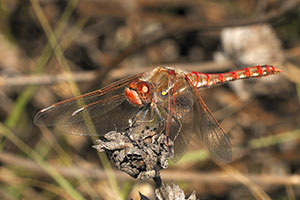
The variegated meadowhawk is a small to medium-sized dragonfly with a slender abdomen.
Learn More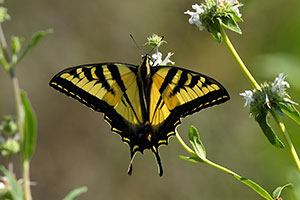
The Tiger Swallowtail butterfly (Papilio rutulus), host plants are sycamore, willow, and cottonwood
Learn More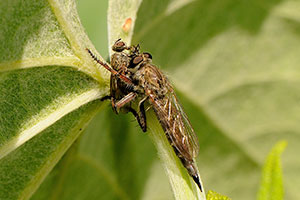
Asilidae are the "Robber Fly" family are powerfully built insects with short, stout proboscis used for sucking the juices from their other insect prey.*
Learn More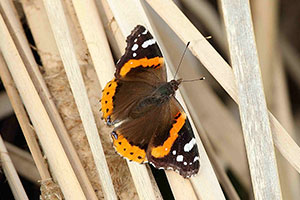
The Stinging Nettle is the host plant for this butterfly. They lay their eggs exclusively on this plant.
Learn More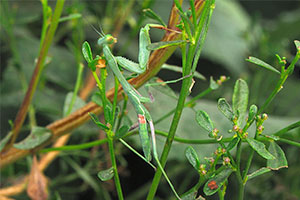
Mantises are an order (Mantodea) of insects that contains over 2,400 species and about 430 genera in 15 families.
Learn More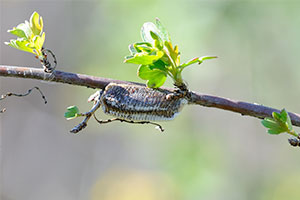
The female praying mantis lays three egg cases each containing approximately 50 eggs. She then dies when cold weather arrives. The eggs hatch in the spring when the life cycle repeats.
Learn More
Pterophoridae or Plume Moth are a family of Lepidoptera with unusually modified wings.
Learn More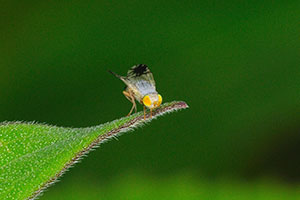
Ulidiidae or "Picture-winged Fly" are Diptera with remarkably marked wings containing bands or spots.
Learn More
Paper wasps or umbrella wasps use fibers from dead wood and plant stems mixed with their saliva to construct nests.
Learn More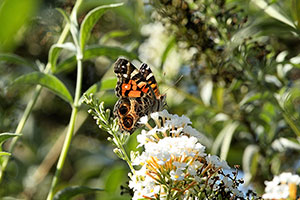
The "Cynthia" group of colorful butterflies known as "American Lady" are know throughout most of the world.
Learn More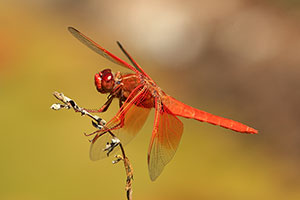
The Neon Skimmer dragonfly (Libellula croceipennis) is found in ponds, lakes, and slow moving rivers in the Southwest United States, Central America, and Northern South Amaerica.
Learn More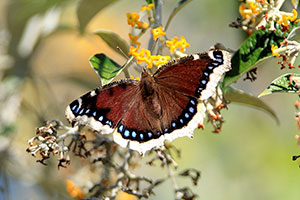
Nymphalis antopia or Mourning Cloak Butterfly in North America and Camberwell Beauty in Britan is native to Eurasia, and North America.
Learn More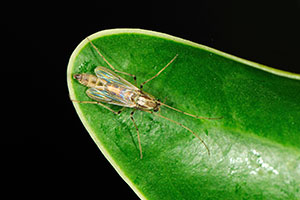
Midges are a group of insects that include many kinds of small flies. Some bite, with others non-biting. These are often mistaken for "Mosquitos".
Learn More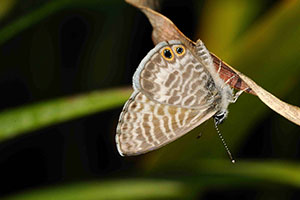
The Marine Blue is a butterfly found in from South America through Mexico up to Southern Texas, Arizona, and California.
Learn More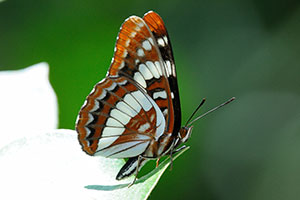
This butterfly uses Willow as it's host plant laying her eggs upon the leaves where when hatching, the larvae feed ravinously.
Learn More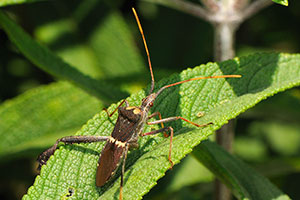
The Leaf-footed Bug is in the family of Coreidae who's hind legs contain a piece that resmble leaves. They feed on sap from plants and may even suck juices from ripenening fruit such as peaches.
Learn More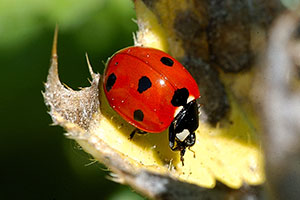
Ladybug is actually a beetle in the order of Coccinellidae. In most of the world they are known as Ladybirds. Females lay their eggs on leaves, but have been known to lay them in Aphids and Scale insects in order to supply food for their larvae.
Learn More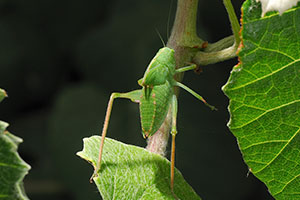
Katydid is in the order of Tettigoniidae.
This nymph has one more molt bafore it will have fully developed wings and flight capability. Katydids are considered pests by growers because they feed on plant leaves, stems, flowers, and seeds. Some even feed on other insects and even vertibrates such as small lizards.
Learn More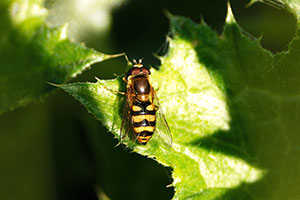
Hoverfly is in the order of Syrphidae. 6,000 species of this insect can mimic bees, and wasps. They feed on nectar from a variety of flowers hence their nickname of"flower fly". Their larvae may feed upon Aphids and Thrips.
Learn More
The Harliquen Bug or Harlequin Cabbage Bug are in the order of Pentatomidae. This stinkbug can be devistating to crops of cabbage, broccoli, and radishes. In the natural area's of SoCal, they are found on Bladderpod shrubs. Shield bugs feed upon the plant juices and will spray this foul smelling mist into the air as a defense when threatened.
Learn More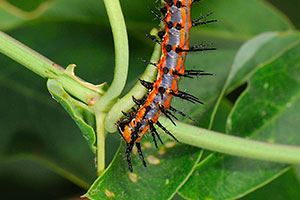
The Gulf Fritillary larvae feeds exclusively on the passion flower leaves found along their vines.
Learn More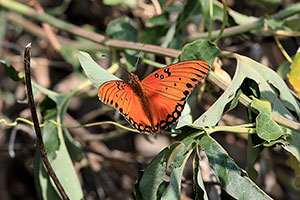
The Gulf Fritillary Butterfly is in the order of Nymphalidae a subspecies of Heliconiinae. It is a bright orange color on the upper wing, and has white stripes on the underside. This butterfly in found in Argentina, north through Central America, Caribbean, north through Mexico, and in California as far north as San Francisco.
Learn More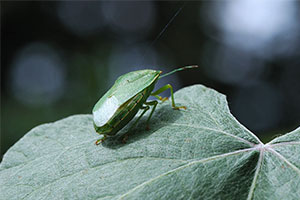
The Green Shield (stink) Bug is in the order of Pentatmidae. Their diet consists of plant juices which they spray into the air when threatened.
Learn More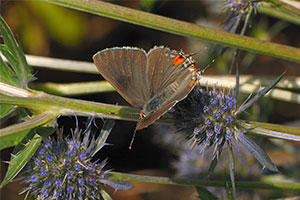
The Gray Hairstreak Butterfly, as is every butterfly, in the order of Lepidoptera. It is found in North America, Central Ameica, and South America.
Learn More.jpg)
Grasshoppers are in the order of Orthoptera. These are considered pests and are responsible for totally destroying fields of grain. Closely related to locusts, and katydids, they are usually sprayed with insecticides. Some are parisitized by wasps and native bees.
Learn More
The Funeral Duskywing Butterfly (Erynnis funeralis) are found from March through November on wing. Their larvae are found on various legumes.
Learn More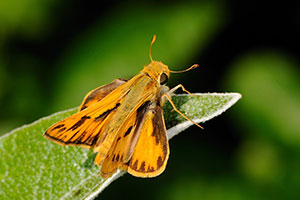
The Fiery Skipper butterfly is a small orange or yellow with black spots in the male, with the female being dark brown with orange or yellow spots. Their larvae can be pests as they feed on Bermuda, St. Augustine, and several other grasses. Found in North America.
Learn More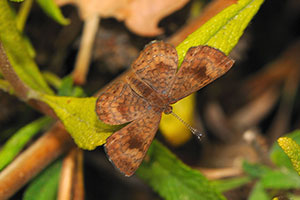
The Fatal Metalmark butterfly is found on Mulefat shrub as it's host plant. This small and hard to find butterfly has come here to the Natural Area of Whittier Narrows in it northen expanse. Found in San Diego and Orange Counties usually.
Learn More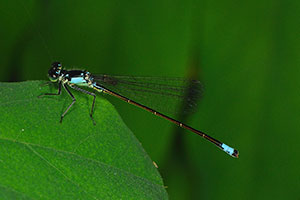
The Damselfly is found in the suborder Odonata. This insect is predatory and feeds on smaller insects. There are several varieties of colors in this tiny insect. Their wings fold flat along it's body when at rest.
Learn More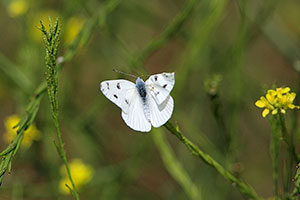
The Checkered White butterfly (Pontia protodise). This butterfly is considered a pest as it can harm crops such as cabbage and mustard plants. Introduce to North America in Canada and is widespread now through the United States of America.
Learn More.jpg)
Carpenter Bees are known as Xylocopinae which include 500 species. Nearly all are able to bore into hard dead wood to make a nest. This is a male and is not capable of stinging.
Learn More.jpg)
The Carpenter bee female is shiny black and is capable of stinging but rarely does unless provoked. They are usually solitary bees and build an entrance tunnel in hard wood that is usually dead. Predator birds are Woodpeckers and Shrikes.
Learn More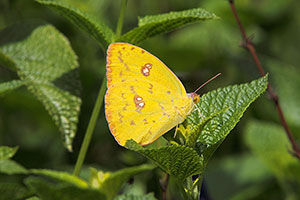
The California Sulfur butterfly (Phoebis sennae) is also known as Cloudless Sulfer butterfly. Their range is from Argentina through Southern Canada.
Learn More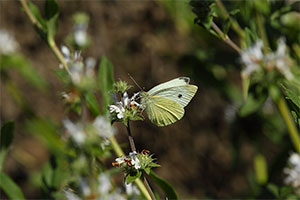
Lorem ipsum dolor sit amet, consectetur adipiscing elit. Mauris eu sollicitudin velit.
Learn More.jpg)
The Bumble Bee (Bombus) is on the decline world wide. There are 250 species of Bombus in the world. They have been used in greenhouses to pollinate tomatoes, and cucumbers.
Learn More.jpg)
Bumble Bee (Bombus) are found worldwide but are on the decline. They are native bees and have been used successfully to polinate tomatoe and cucumber crops in greenhouses.
Learn More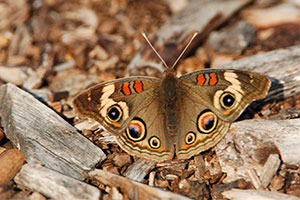
The Common Buckeye butterfly (Junonia coenia) is found in Southern Canada, United States, Mexico, Central America, and Columbia. It's diet is nectar and sips minerals from wet mudd and sand.
Learn More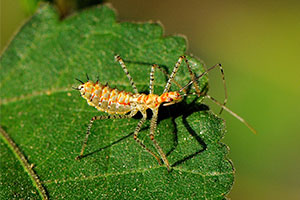
The Assassin Bug (Reduviidae) is a predatory insect that uses it's long proboscis to pierce an insect, then sucke the body fluids from it's prey. There are more than 7,000 species of "Assassin's".
Learn More